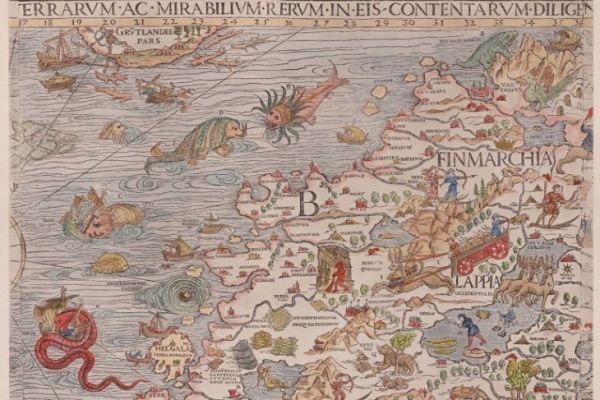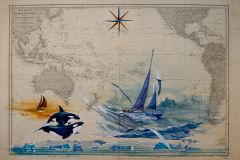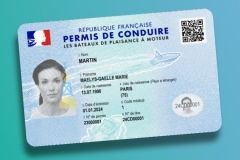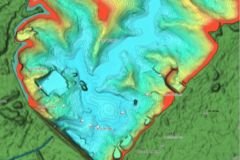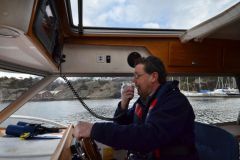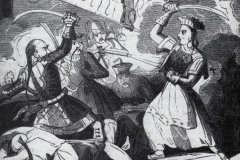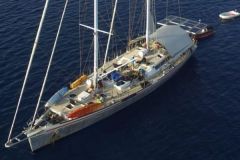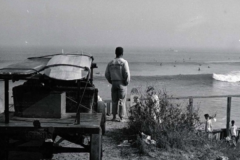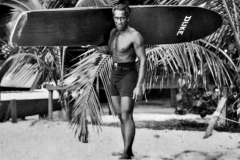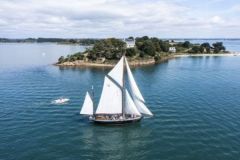At a time when the death rate among sailors on long voyages was as high as 50%, medieval stories and beliefs led cartographers to imagine extraordinary dangers lurking in the depths of the sea.
Who is behind Carta Marina?
The Carta Marina was created in the 1530s by the clerk-cartographer Olaus Magnus. This map, which focuses on marine mythology, is a valuable geographical representation of Europe at that time. Centered on Scandia (Scandinavia), it covers Nordic lands such as Sweden, Norway, Denmark, Iceland, Finland, Lithuania and Livonia. Measuring an impressive 1.70 m wide by 1.25 m high, the original map was printed in black and white from nine woodcut blocks sequenced from west to east and north to south. Olaus Magnus spent 12 years working on it, before it was finally printed in 1539. Its precision and detail make it one of the most remarkable cartographic productions of its time, although it is above all the depictions of the seas and their mysteries that capture our attention.
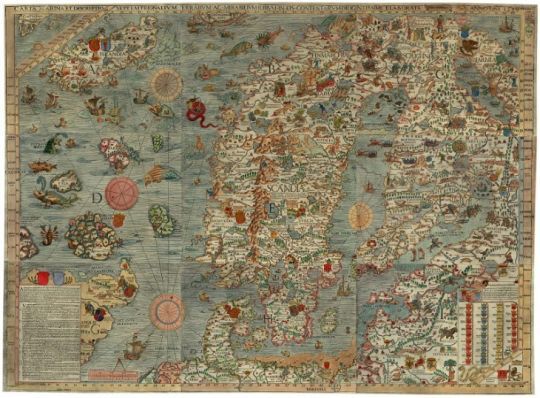
What does the map show?
The Carta Marina offers a fascinating insight into how the oceans were perceived in medieval times. Created by Swedish traveler Olaus Magnus, this map is a mine of information on the beliefs and knowledge of the time. It features illustrations inspired both by Magnus's own observations and the accounts of the sailors and fishermen with whom he interacted. Drawing on bestiaries and works such as Hortus Sanitatis, the first encyclopedia of natural history dating from 1491, Magnus has created a period representation of the medieval marine world, when unicorns and mermaids were considered, alongside savannah animals, to be both curiosities and wonders of the world.
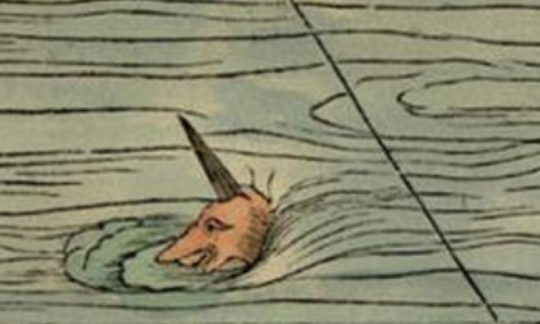
Near the Norwegian coast, the Carta Marina depicts a red sea serpent measuring almost 60 meters, attacking a ship about to sink. In his "History of the Peoples of the North", published in 1555, Magnus relates, from descriptions gathered from sailors, that this snake is capable of emerging from the water to snatch an innocent sailor from his ship. It is also described as capable of moving over land to prey on livestock.
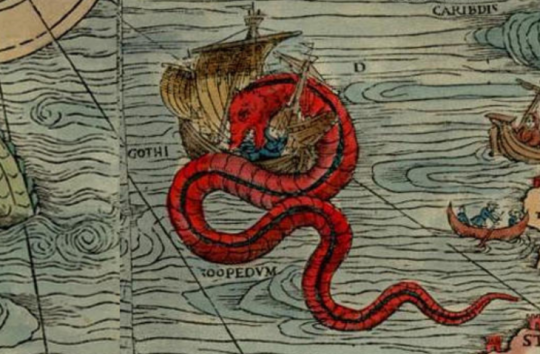
In another scene from Carta Marina, a gigantic monster clutches a seal in its pointed beak, while an oversized lobster grabs a man in its claws, the latter desperately trying to free himself.
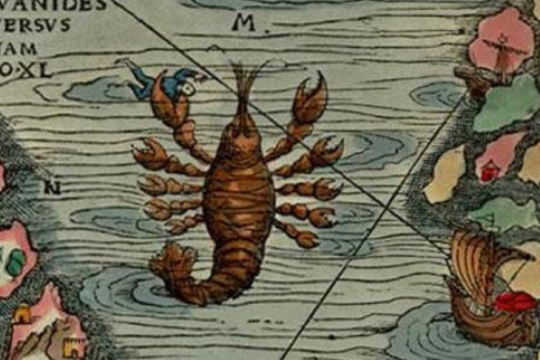
These sea creatures were renowned for their cruelty and hostility towards humans. Among them, the pistrix were particularly fearsome and aggressive. In his 1555 book, Magnus describes them as 60 meters long, with a broad, forked tail, flipper-like feet and a warthog-like face pierced by two vents at the top. According to Magnus, the pistrix were capable of attacking a ship by striking with their tail, or even sinking it by throwing themselves onto the deck.
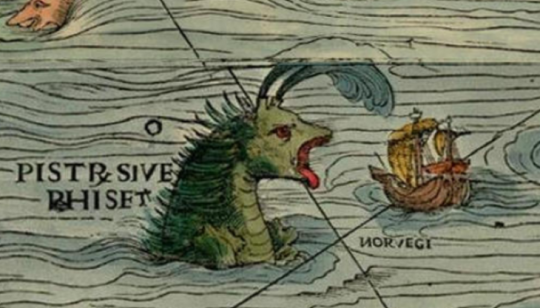
In the interests of prevention, Magnus has included advice in the Carta Marina on how to protect yourself from these creatures. Near the Icelandic coast, two sperm whales load a ship. " At the stern of the ship, a man stands. You might think he's holding a rifle, but it's actually a trumpet "one of the only ways to scare off a sea monster.
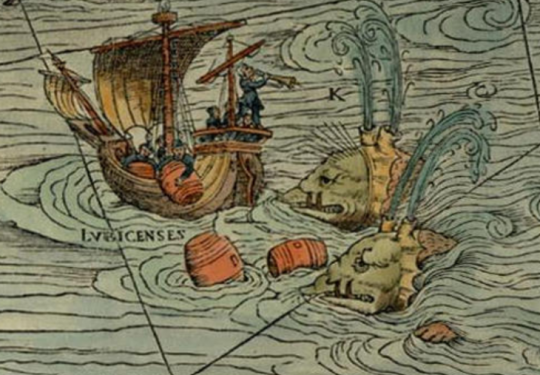
The waters between Norway and Iceland were extremely dangerous. Off the Norwegian coast, Magnus depicts the treacherous Moskstraumen (maelstrom), a current that still exists today. Between snakes and sperm whales, Magnus has also drawn the giant whale, a deceptive creature that sneaks up on boats.
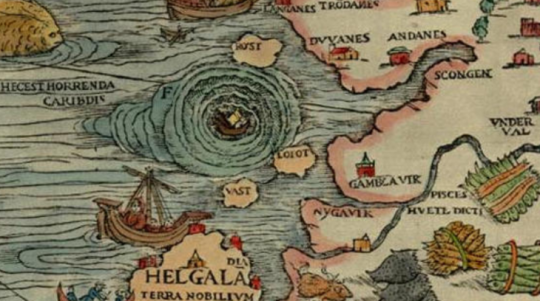
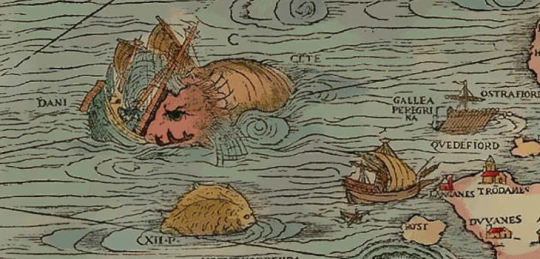
Why draw such a map?
The motivation behind the creation of this card was twofold. Firstly, each additional detail added to the map represented an additional cost: all these decorative elements thus let its richness shine through. Secondly, the sea monsters drawn by Olaus Magnus served as a warning. Indeed, they reflected the major concerns about the dangers of sea travel at the time. In a world where the ocean was an unpredictable and dangerous territory, the Carta Marina embodied both the fear of the unknown and the desire to tame it.
At the same time, if this map leads to the observation of fantastic creatures, it juxtaposes more realistic representations such as whaling in the Faroe Islands, thus establishing a link between mythical beliefs and the first attempts at scientific explanation.
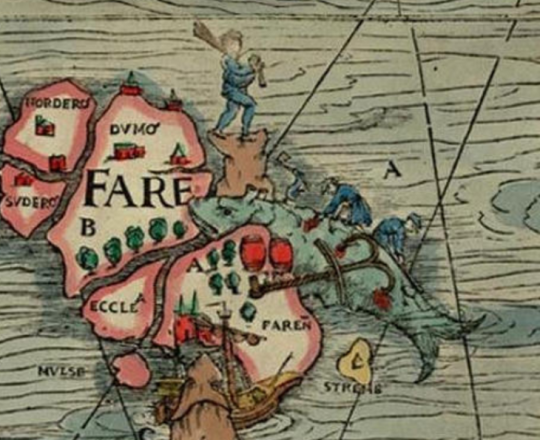
Scientists in the 16th century sought to identify these marine creatures, suggesting they could be giant squid, pinnipeds such as seals or sea lions, sharks, whales or regalecids.
Another hypothesis is that some sea monsters may have been strategically positioned to serve the interests of certain kingdoms, perhaps to dissuade other kingdoms from fishing in certain areas.
Copies
After 1574, all known copies of the original Carta Marina disappeared from the public domain, contributing to its oblivion for much of history. In 1886, a copy was discovered by Oscar Brenner at Munich's Hof- und Staatsbibliothek, where it is preserved today. Another copy was found in Switzerland in 1961, then transferred to Sweden the following year to the Uppsala Carolina Rediviva University Library, where it has been stored ever since. Subsequent reproductions have been colorized.
In 2024, the mystery of the creatures that inhabit the ocean depths continues to fascinate, with 95% of the oceans still unexplored. Although our fear of being attacked by sea monsters is now outdated, we need only think of the image of an orca skeleton washing up on the beach in medieval times to understand the horror and the questions raised by populations, leading to the birth of certain beliefs...
